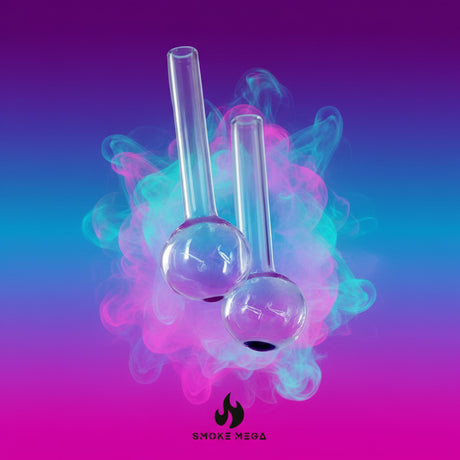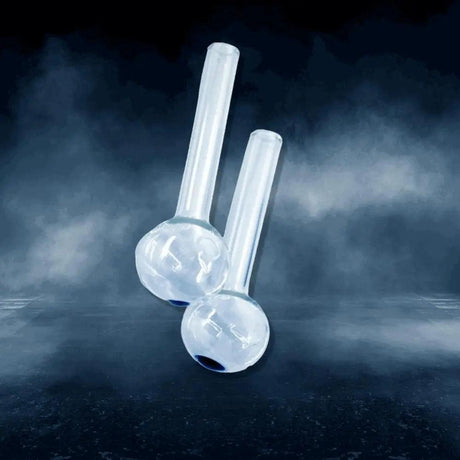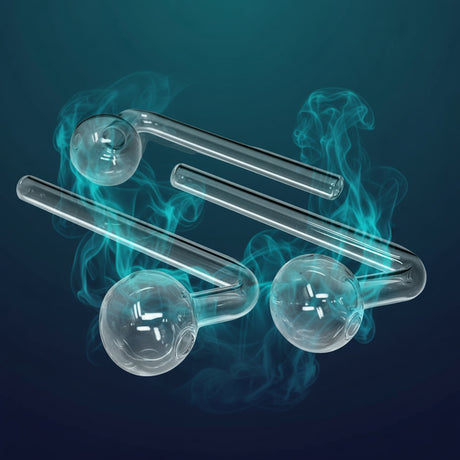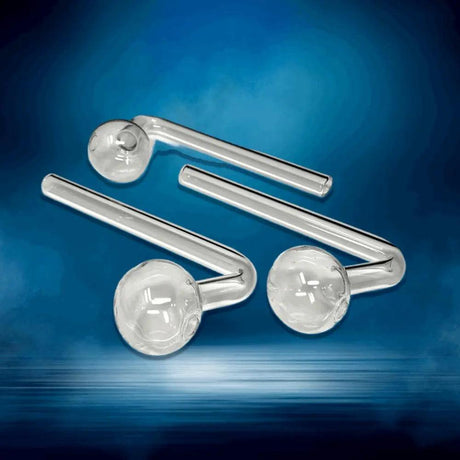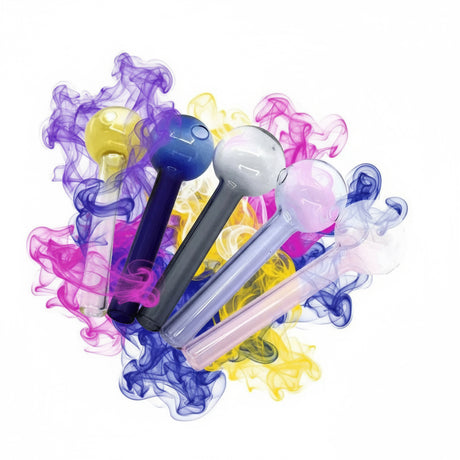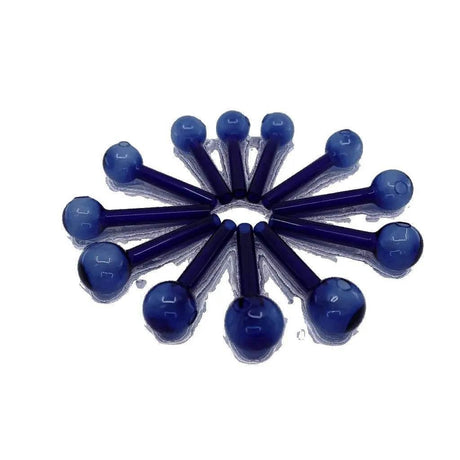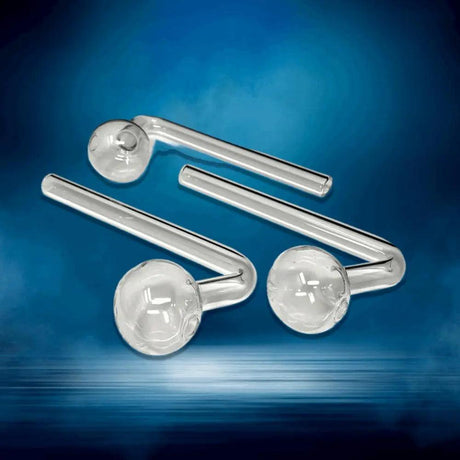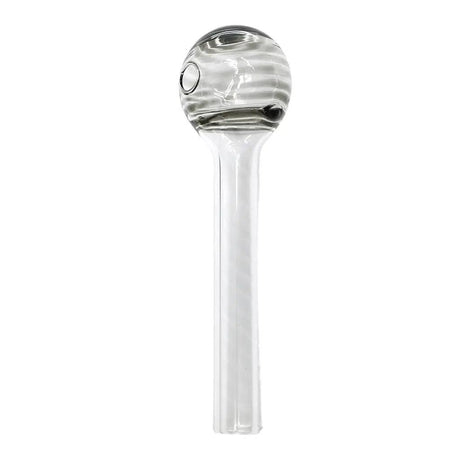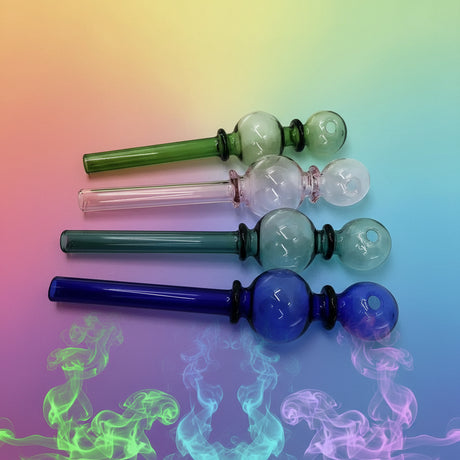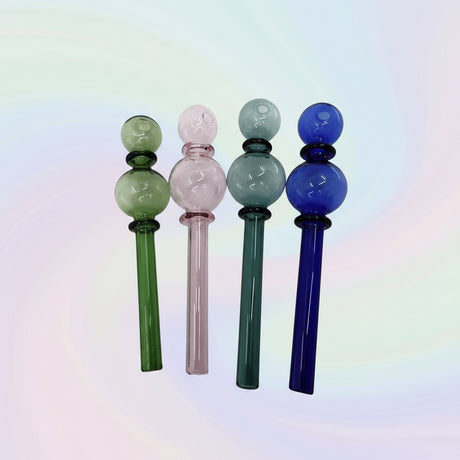Recent Posts
How to Turn a Bong Into a Dab Rig (And Vice Versa)
Published on December 23, 2025
Quartz Banger vs. Traditional Dab Nail: Which Should You Buy?
Published on November 22, 2025
The Ultimate Thanksgiving & Friendsgiving Gift Guide: Perfect Picks for Every Budget
Published on November 12, 2025
Cyber Monday Steals: Top Bongs, Dab Rigs, and Oil Burners for the Best Value
Published on November 12, 2025
The Ultimate Black Friday Stocking Stuffer Guide (Awesome Gifts Under $30)
Published on November 12, 2025
Your Go-To Online Smoke Shop: Discover Top Bongs & Dab Rigs for Effortless Hits
Published on October 03, 2025
Parts Of A Smoking Pipe | A Detailed Overview

CP SMOKE MEGA |
Smoking pipes have been around for centuries, offering a timeless and relaxing experience for tobacco enthusiasts. Whether you’re a seasoned smoker or a curious beginner, understanding the different parts of a smoking pipe can enhance your enjoyment and ensure you make the most of your smoking sessions.
In this article, we'll explore the various components that make up a smoking pipe, from the bowl to the bit. By the end, you'll have a detailed understanding of the anatomy of a smoking pipe, the materials used, the different types of pipes, and how to care for them.
The Anatomy of a Smoking Pipe
A smoking pipe might look simple, but it consists of several key parts that work together to deliver a smooth and satisfying smoke. Let’s break down each component.
Bowl
The bowl is where the tobacco is packed and lit. It’s the heart of the smoking pipe and plays a crucial role in the overall smoking experience.

Materials Used in Bowls
Bowls are typically made from materials that can withstand high temperatures, such as briar wood, meerschaum, or clay. Each material offers a different smoking experience and aesthetic appeal.
Bowl Shapes and Sizes
Bowls come in various shapes and sizes, which can affect the burn rate of the tobacco and the overall flavor. Common shapes include Dublin, Billiard, and Bulldog, each offering a unique experience.
Stem
The stem connects the bowl to the mouthpiece and allows smoke to travel from the burning tobacco to your mouth.
Straight Stems
Straight stems provide a direct path for the smoke and are easy to clean. They are favored by smokers who prefer a more traditional pipe design.
Bent Stems
Bent stems curve downward, providing a more comfortable hold. They are ideal for smokers who like to rest the pipe on their chin or chest while smoking.
Shank
The shank is the thicker part of the pipe that connects the bowl to the stem. It’s the transition piece between the two and can vary in length and design.
Shank Lengths
Shanks can be short, giving the pipe a compact look, or long, adding elegance and a cooler smoke.
Shank Designs
Designs vary from simple and smooth to intricate and detailed, reflecting the craftsman’s style and the smoker’s preference.
Mouthpiece (Bit)
The mouthpiece, also known as the bit, is the part of the pipe that you hold in your mouth. It’s where you draw the smoke in.
Mouthpiece Materials
Mouthpieces are usually made from materials like vulcanite (hard rubber) or acrylic. Vulcanite is softer and more comfortable, while acrylic is more durable and resistant to oxidation.
Types of Bits
Bits can be tapered or fishtail, with each offering a different feel in the mouth. The choice depends on personal comfort and smoking style.
Draft Hole
The draft hole is a small, but vital part of the pipe. It’s the channel that allows air to flow from the bowl to the mouthpiece.
Importance of Proper Airflow
Proper airflow is crucial for an even burn and a smooth draw. If the draft hole is too narrow, it can make smoking difficult. If it’s too wide, the smoke can be harsh.
Placement of the Draft Hole
The placement of the draft hole, usually at the bottom center of the bowl, ensures that all the tobacco burns evenly, maximizing the flavor.
Filter
Some smoking pipes come with filters that reduce the amount of tar and nicotine that reaches your mouth.
Types of Filters
Filters can be made from charcoal, paper, or metal. Each type has its pros and cons, with charcoal filters being the most effective at reducing impurities.
- Charcoal Filters: These are the most effective at reducing impurities and offer a milder smoke.
- Paper Filters: Less effective than charcoal, but they still reduce some of the tar and nicotine.
- Metal Filters: These are reusable and durable, but they don’t filter as much as the other types.
Advantages of Using Filters
Using a filter can make the smoke smoother and less harsh, which is especially beneficial for beginners or those who are sensitive to strong tobacco flavors.
Materials Used in Smoking Pipes
The material of a smoking pipe not only affects its appearance but also its performance. Let’s look at some of the most common materials used in pipe making.
Briar Wood
Briar wood is the most popular material used in smoking pipes, and it’s easy to see why.
Characteristics of Briar
Briar wood is harvested from the root burl of the white heath tree, predominantly found in the Mediterranean region. This wood is highly prized for several reasons:
- Heat Resistance: Briar wood can withstand high temperatures without burning, making it ideal for holding lit tobacco.
- Moisture Absorption: One of briar’s key features is its natural ability to absorb moisture, which helps in providing a cool, dry smoke.
- Durability: Briar is extremely durable, capable of lasting for decades with proper care.
- Aesthetic Appeal: The beautiful grain patterns in briar wood add to the visual appeal of the pipe, making each one unique.
Meerschaum
Meerschaum, a mineral also known as hydrated magnesium silicate, offers a distinctive smoking experience.
Unique Features of Meerschaum
Meerschaum has been used for centuries in pipe-making, and it offers several benefits:
- Lightweight: Meerschaum pipes are significantly lighter than briar pipes, making them comfortable to hold during extended smoking sessions.
- Cool Smoke: The mineral’s porous nature allows it to absorb moisture and tar, providing a cool, dry, and smooth smoke.
- Aging Gracefully: Over time, meerschaum pipes develop a rich patina, changing color from white to shades of amber and brown. This aging process is highly valued by collectors.
- Artistic Carvings: Meerschaum is soft and easy to carve, allowing for intricate designs and artistic expressions that are difficult to achieve with other materials.
Corncob
Corncob pipes are an American classic, known for their affordability and ease of use.
Why Corncob is Popular
Corncob pipes, originally popularized by Missouri Meerschaum, are favored for several reasons:
- Affordability: Corncob pipes are among the most affordable smoking pipes on the market, making them accessible to smokers of all levels.
- Lightweight: They are very lightweight, making them comfortable to hold and smoke.
- Great for Beginners: Due to their low cost and ease of use, corncob pipes are often recommended for beginners who are just getting into pipe smoking.
- Surprisingly Good Smoke: Despite their simplicity, corncob pipes provide a clean, flavorful smoke, making them a favorite among both novice and seasoned smokers.
Clay
Clay pipes have a rich history, dating back to the 16th century, and they offer a unique smoking experience.
Historical Significance of Clay Pipes
Clay pipes were once the most common type of smoking pipe, especially in Europe. Their historical significance and unique properties make them a fascinating choice:
- Pure Smoke: Clay pipes provide an unfiltered, pure tobacco taste, as the material does not impart any flavor to the smoke.
- Heat Resistance: Like briar, clay is highly resistant to heat, allowing for a consistent burn. However, they can get quite hot to the touch.
- Fragility: Clay pipes are more fragile than other types, making them less durable and more prone to breaking if dropped. Despite this, many collectors and enthusiasts appreciate their historical charm and the unique smoking experience they offer.
- Tradition: Clay pipes were popular in the 16th and 17th centuries, and using one can feel like a step back in time, offering a connection to the past.
Different Types of Smoking Pipes
Smoking pipes come in a variety of shapes and styles, each designed to enhance the smoking experience in different ways. Whether you’re a novice or a seasoned pipe smoker, understanding the different types of pipes can help you choose one that suits your preferences and smoking habits.
The Classic Billiard Pipe
The Billiard pipe is one of the most traditional and widely recognized pipe shapes.
Characteristics of the Billiard Pipe
- Straight Stem: The Billiard pipe typically features a straight stem, which offers a direct airflow and a strong tobacco flavor.
- Cylindrical Bowl: The bowl is cylindrical and evenly proportioned, providing a consistent burn and making it easy to pack.
- Versatility: This pipe is versatile and easy to smoke, making it a great choice for beginners and experienced smokers alike.
The Bent Pipe
The Bent pipe is known for its curved stem, which adds a unique aesthetic and provides practical benefits.
Advantages of a Bent Stem
- Comfortable Grip: The curved stem makes the Bent pipe easier to hold and allows it to hang comfortably from the mouth, reducing the strain on the jaw.
- Cooler Smoke: The bend in the stem helps to cool the smoke slightly before it reaches the mouth, offering a smoother smoking experience.
- Stylish Design: Bent pipes are often seen as more stylish and sophisticated, appealing to those who appreciate both form and function.

The Dublin Pipe
The Dublin pipe features a tapered bowl that is wider at the top and narrower at the bottom.
Benefits of the Dublin Shape
- Concentrated Flavor: The tapered shape of the bowl helps concentrate the flavor of the tobacco, offering a more intense smoking experience.
- Even Burn: The bowl’s design promotes an even burn, reducing the likelihood of needing to relight the pipe frequently.
- Elegant Appearance: Dublin pipes are often admired for their elegant and refined appearance, making them a popular choice among pipe enthusiasts.
The Bulldog Pipe
The Bulldog pipe is easily recognizable by its squat, diamond-shaped bowl and short stem.
Unique Features of the Bulldog Pipe
- Distinctive Shape: The Bulldog’s diamond-shaped bowl and wide shank give it a distinctive look that sets it apart from other pipes.
- Comfortable Hold: The shape of the Bulldog pipe makes it comfortable to hold, and its shorter stem offers a robust flavor profile.
- Sturdy Build: Bulldog pipes are often praised for their sturdy construction, making them durable and reliable for daily use.
The Churchwarden Pipe
The Churchwarden pipe is characterized by its long stem, which can be as much as 10 to 16 inches in length.
Benefits of a Long Stem
- Cooler Smoke: The long stem allows the smoke to cool significantly before reaching the mouth, providing an exceptionally smooth smoking experience.
- Relaxed Smoking: The length of the stem makes the Churchwarden pipe ideal for relaxed, leisurely smoking sessions.
- Historical Appeal: Often associated with historical and fantasy settings, the Churchwarden pipe has a nostalgic appeal that many smokers find enchanting.
The Meerschaum Pipe
Meerschaum pipes, made from a rare mineral, are known for their unique smoking qualities and artistic designs.
The Allure of Meerschaum Pipes
- Cool and Dry Smoke: Meerschaum pipes provide a cool, dry smoke due to the mineral’s porous nature, which absorbs moisture and impurities.
- Artistic Carvings: Meerschaum is soft and easy to carve, allowing for elaborate and intricate designs that make each pipe a work of art.
- Color-Changing Patina: Over time, Meerschaum pipes develop a rich patina that enhances their beauty and adds a personal touch to each pipe.
The Corncob Pipe
Corncob pipes are an iconic and affordable option, often associated with American culture.
Why Corncob Pipes Are Popular
- Affordable and Accessible: Corncob pipes are very affordable, making them a great choice for beginners or those looking for a simple, no-fuss pipe.
- Lightweight: They are lightweight and easy to handle, providing a comfortable smoking experience.
- Clean and Flavorful Smoke: Despite their simplicity, corncob pipes deliver a clean and flavorful smoke, often surprising first-time users with their quality.
The Clay Pipe
Clay pipes, with their long history, offer a pure and unadulterated smoking experience.
Features of Clay Pipes
- Pure Tobacco Flavor: Clay pipes do not impart any flavor to the smoke, allowing you to experience the pure taste of the tobacco.
- Historical Significance: Clay pipes have been used for centuries, and smoking one can feel like connecting with a bygone era.
- Fragility: While clay pipes offer a unique experience, they are more fragile than other materials, requiring careful handling.
The Calabash Pipe
The Calabash pipe, often seen in movies and pop culture, is famous for its distinct shape and use of a gourd as the bowl.
The Appeal of the Calabash Pipe
- Cool Smoke: The Calabash pipe provides an exceptionally cool smoke due to its large chamber and long stem.
- Unique Design: The use of a gourd as the bowl gives the Calabash pipe its unique and instantly recognizable shape.
- Cultural Icon: Often associated with characters like Sherlock Holmes, the Calabash pipe has a cultural significance that adds to its charm.
The Freehand Pipe
Freehand pipes are custom-made, often featuring unusual shapes and designs that showcase the artisan’s skill.

The Art of Freehand Pipes
- One-of-a-Kind Designs: Each Freehand pipe is unique, reflecting the creativity and craftsmanship of the maker.
- Artistic Expression: Freehand pipes are often considered works of art, with intricate details and innovative shapes that make them highly collectible.
- Personalized Smoking Experience: The custom nature of Freehand pipes means they can be tailored to the smoker’s preferences, offering a truly personalized smoking experience.
Conclusion
Smoking pipes have a rich history and an enduring appeal, offering a unique and contemplative experience to those who appreciate the ritual of pipe smoking. Understanding the various parts of a smoking pipe—such as the bowl, stem, shank, mouthpiece, and draft hole—can greatly enhance your smoking experience. Additionally, knowing the different materials and types of pipes available can help you choose one that best suits your preferences and style.
Whether you’re drawn to the classic charm of a briar wood pipe, the intricate artistry of a meerschaum pipe, or the simple practicality of a corncob pipe, there’s a perfect pipe out there for every smoker. The key is to experiment, explore, and enjoy the process of finding the right pipe that complements your smoking habits and enhances your enjoyment. With proper care and attention, a well-chosen smoking pipe can provide years of satisfaction and become a cherished part of your collection.
FAQs
How do I clean my smoking pipe?
To clean your smoking pipe, first, allow it to cool down completely. Remove the stem from the bowl and use a pipe cleaner to clean the inside of the stem. For the bowl, gently scrape out any remaining ash or tobacco, and use a pipe reamer to clean the interior if necessary. Periodically, you can clean the pipe with alcohol (avoid soaking the bowl) to remove tar buildup and ensure a fresh smoking experience.
2. What is the best material for a smoking pipe?
The best material for a smoking pipe depends on your personal preferences. Briar wood is the most popular choice due to its heat resistance and durability. Meerschaum offers a cool, dry smoke and develops a beautiful patina over time. Corncob pipes are affordable and provide a surprisingly good smoke, making them ideal for beginners. Clay pipes are favored for their pure tobacco flavor, though they are more fragile.
3. How long should I let my pipe rest between smokes?
It’s recommended to let your pipe rest for at least 24 hours between smokes. This allows the pipe to cool down completely and gives the briar wood time to dry out, preventing moisture buildup and extending the life of your pipe. Having multiple pipes in rotation can help you enjoy smoking more frequently while still giving each pipe enough time to rest.
4. Can I use different tobacco in the same pipe?
Yes, you can use different tobaccos in the same pipe, but keep in mind that certain tobaccos, especially strong-flavored ones, can leave a lingering taste. If you plan to smoke a variety of tobaccos, you might want to designate specific pipes for different types (e.g., one for aromatic blends, another for English blends) to prevent flavors from mixing.
5. What is the best way to pack a pipe?
The best way to pack a pipe is to use the three-step method: First, fill the bowl loosely with tobacco and press it down gently with your finger. Next, add more tobacco and press it down with a bit more pressure. Finally, fill the bowl one last time, pressing down firmly. The goal is to create a firm but breathable pack that allows air to flow through easily when you draw. Lighting the tobacco evenly across the top of the bowl will ensure a smooth and consistent smoke.

